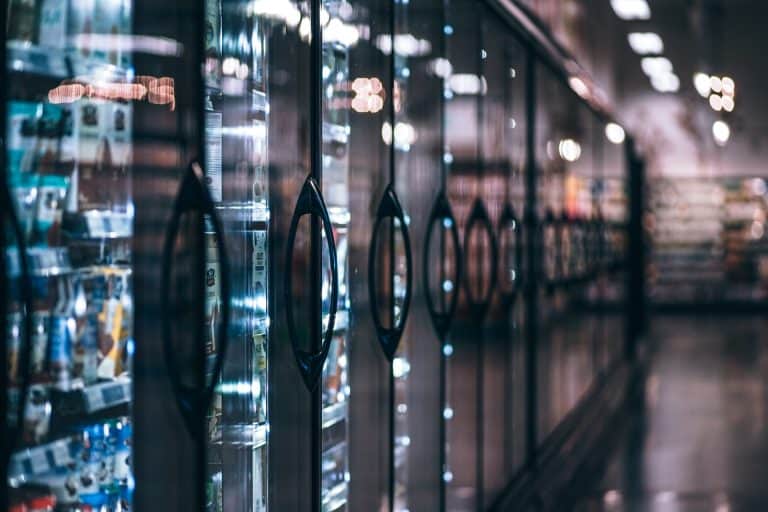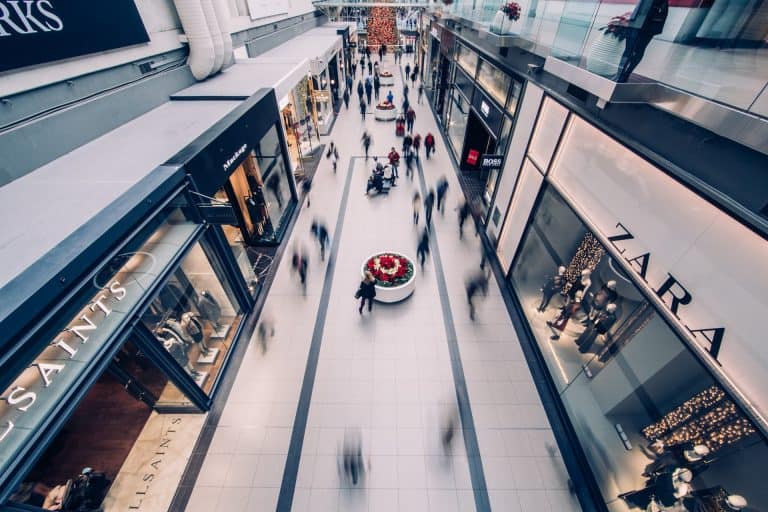We’ve all seen the headlines: More Store Closings, Will Brick-and-Mortar Survive? Fear the Retail Apocalypse! And then we laugh quietly to ourselves as we recall Amazon’s rise from an online bookstore to an e-commerce superstore. There is no denying the dynamic growth rate of e-commerce, which according to the 2017 U.S. Census Bureau has almost doubled over the past five years. Yet iQmetrix found that 60% of tech-savvy consumers would choose to shop at brick-and-mortars if online services were provided in-store.
In 2012, when asked if Amazon would ever open physical stores, e-commerce mogul, Amazon founder and CEO Jeff Bezos responded, “We would love to, but only if we can have a truly differentiated idea.” Now it’s 2018, and Amazon has delivered. This time, it’s not through a cardboard box on your doorstep but through a revolutionary checkout-free store that tracks customer purchases through the Amazon Go app, computer vision, deep learning algorithms and sensor fusion. In an era when convenience is king and the smartphone has evolved into our third hand, the challenge for brick-and-mortar businesses is to find exciting, innovative and differentiating ways to merge both on- and offline consumer experiences. So here it is – your quick guide to some of today’s retail revolutionists and how they are changing the game for traditional brick-and-mortars.
Syte.ai: Using artificial intelligence to integrate e-commerce into physical stores
Syte.ai is an application programming interface that develops visual search technology for fashion brands. The program lets shoppers upload photos taken from their everyday experiences or saved on their smartphones to find similar products in-store. While this technology may seem to contradict the traditional brick-and-mortar business model, it is actually beneficial in that it creates a fluid integration of e-commerce into physical stores. And when shoppers can search entire outfits at once, the number of items in their shopping carts naturally increases.
Bill Abel – VP, Connections Strategy at LUCKIE – explains that as artificial intelligence evolves, it will only continue to help shoppers manage their own unique look. Bill says, “Even more impressive than Syte.ai is Amazon’s Echo Look, a device which captures daily photos of your outfits and then uses that data to help you make decisions about what to wear.” Amazon can also use this data to make suggestions for your next purchase of accessories or other items to expand your wardrobe. When brands use artificial intelligence to provide a relevant service for their consumers, they promote products in an authentic and nonintrusive way that stands out from the noise of traditional advertising.
Walmart: Innovating to increase convenience and capitalize on the in-store experience
A world without Walmart?! Not on CEO Doug McMillon’s watch. If we’re talking straight earnings, Walmart is still the clear leader, bringing in $14 billion in annual net income compared to Amazon’s $2.3 billion. Yet Amazon’s growth rate is impressive. It has averaged 28% since 2008, compared to Walmart’s 3%. In 2016, Walmart acquired Jet.com for $3.3 billion and has since set its sights on building online sales and leveraging its physical store advantage in multiple ways. First, Walmart has added pickup towers to 500 stores, giving consumers the ability to retrieve online orders in stores. While Target recently acquired Alabama-based delivery startup Shipt and Amazon added Whole Foods to its retail empire, Walmart has made strides in incorporating Uber into its home-delivery mix.

In addition to providing much of the brainpower behind Walmart’s innovative tactics, Marc Lore, Jet.com founder and CEO of Walmart’s U.S. e-commerce business, has emphasized the importance of customer care and experience throughout the entire organization. Walmart has also made a variety of acquisitions that include Bonobos, Moosejaw, ShoeBuy and ModCloth, all of which were known for the integration of on- and offline experiences and superb customer service.
Abby Jay, Brand Planner at LUCKIE, suggests that integrating technology should ultimately enhance the customer journey. “Retail apps give customers the ability to run price checks, verify in-store inventory and receive discounts while on site. Convenience and incentives help enhance the experience,” she says. “As an example, Target started using Bluetooth beacons to alert its Cartwheel app users to nearby deals.” Abby adds that brands should continue strengthening the in-store experience by integrating technology while keeping their customers’ journeys in mind.
Hafta Have: Using digital technology to drive in-store and online conversion

According to one study, 90% of retail shoppers use their smartphones while in stores. The startup Hafta Have has capitalized on this insight, creating a service that allows consumers to text pictures of sales tags and receive text notifications about incentives and discounts on those particular items. All items are added to a personal profile that can be accessed online. This allows retailers to communicate with the shopper in real time, driving in-store purchase intent into conversion while also creating an opportunity to upsell other merchandise. Brian Conley, Director of Strategic Engagement at LUCKIE, shares an important factor to keep in mind when working with real-time engagement. He says customers are becoming smarter at pushing unwanted communication out of the way and only interacting on their terms. “Make the messaging and communication relevant and meaningful,” Brian says. “If you do that, they’ll continue to come back for more.”
Another gold mine here is that Hafta Have’s technology provides retailers with true purchase intent data. Betsy Pendergast, LUCKIE’s Director of Strategic Planning, explains.
“Hafta Have gains consumer insight into a process traditionally left to post-behavior rationalization or hypothetical scenarios in survey. This technology could potentially help brands understand user intent behavior in ways that include connecting online and offline behavior,” she says.
Warby Parker: Harnessing the power of good design
When most people think “Warby Parker,” what comes to mind is an online retailer that completely disrupted the prescription eyewear industry. Four-eyed fans around the globe couldn’t get enough of the company’s sleek and sophisticated D2C brand, which in 2015 was valued at $1.5 billion. When asked why the e-commerce giant opened retail stores, Neil Blumenthal, one of Warby Parker’s founders, put it this way: “We believe the future of retail is at the intersection of e-commerce and bricks-and-mortar.”
Take one step into the stunning, literary themed stores and it’s almost impossible to imagine walking out empty-handed. LUCKIE Design Director Markus Beige explains this phenomenon. “Good design can speak to the quality of a product and so boost the confidence a customer might have in buying a product.” Markus says a combination of coherent design, logo usage, imagery and sound – but also language and the way the staff behaves – “forms credibility and trust in a brand.” Warby Parker is a fine example of how brands can use good design as a silent sales representative and capitalize on the in-store consumer experience.

So, there you have it. Retail is not dead; ordinary brand experiences are dead. While technology has become ingrained in our everyday lives and vastly impacts how we spend our time and money, there is still an enduring consumer need for engaging, tangible, positive human experiences.
Sources:
https://www.census.gov/retail/mrts/www/data/pdf/ec_current.pdf
https://www.axios.com/amazon-is-unstoppable-1513302839-4f3598f2-e879-4055-b29b-fa4f68128d15.html
http://www.businessinsider.com/amazon-jeff-bezos-stores-2012-11
https://marketingland.com/survey-90-percent-of-retail-shoppers-use-smartphones-in-stores-135759
http://fortune.com/2017/09/27/5-moves-walmart-is-making-to-compete-with-amazon-and-target/
https://www.investors.com/news/wal-mart-trademarks-wam-by-walmart-amid-grocery-delivery-push/